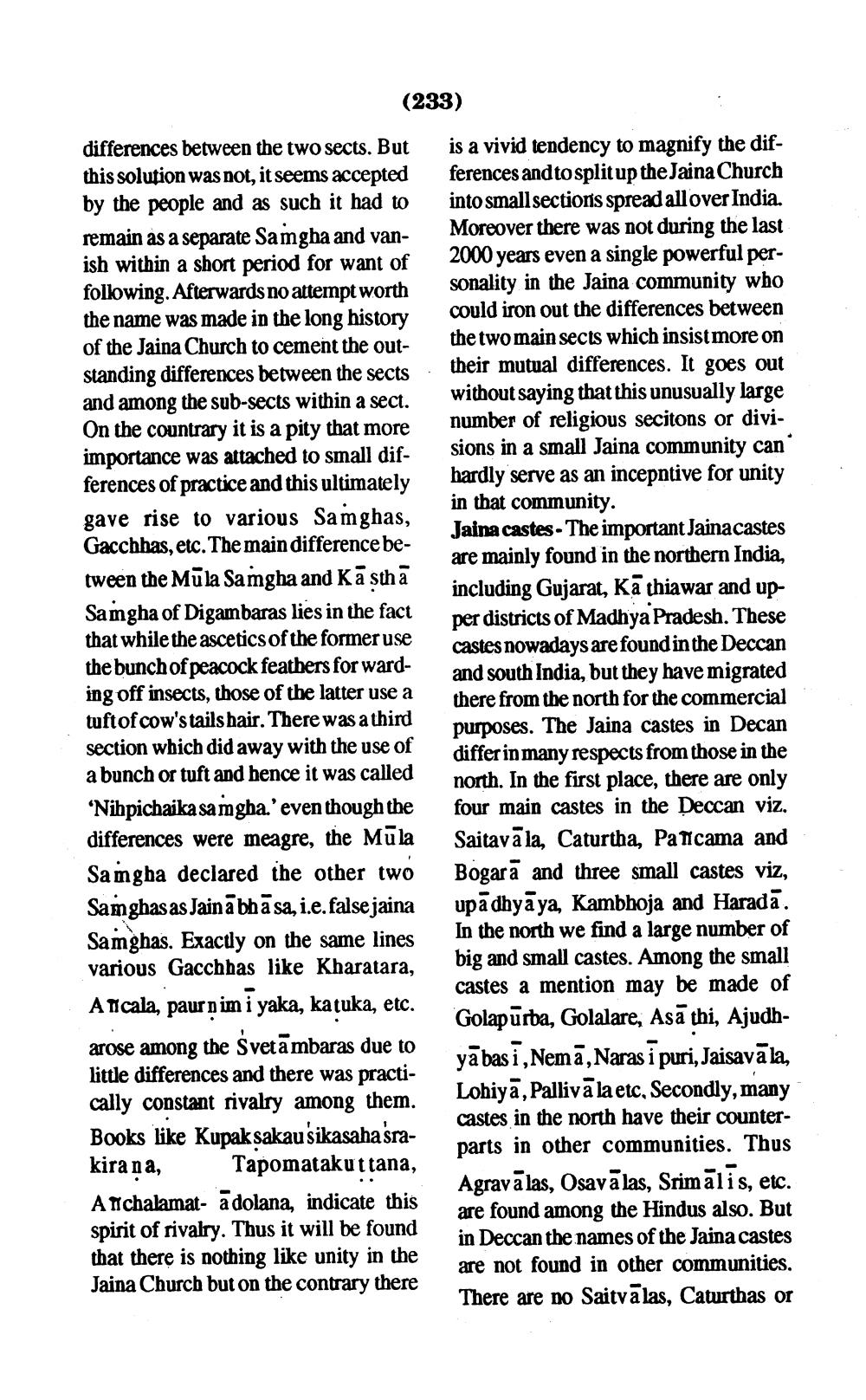________________
(233)
differences between the two sects. But this solution was not, it seems accepted by the people and as such it had to remain as a separate Samgha and vanish within a short period for want of following. Afterwards no attempt worth the name was made in the long history of the Jaina Church to cement the outstanding differences between the sects. and among the sub-sects within a sect. On the countrary it is a pity that more importance was attached to small differences of practice and this ultimately gave rise to various Samghas, Gacchhas, etc. The main difference between the Mūla Samgha and Kā sthā Samgha of Digambaras lies in the fact that while the ascetics of the former use the bunch of peacock feathers for warding off insects, those of the latter use a tuftof cow's tails hair. There was a third section which did away with the use of a bunch or tuft and hence it was called ‘Nihpichaika samgha.'even though the differences were meagre, the Mula Samgha declared the other two Samghas as Jain a bhāsa, i.e. false jaina Samghas. Exactly on the same lines various Gacchbas like Kharatara, A Ticala, pauro im i yaka, katuka, etc. arose among the Svetāmbaras due to little differences and there was practically constant rivalry among them. Books like Kupak sakausikasahasrakirana, Tapomatakuttana, Anchalamat- a dolana, indicate this spirit of rivalry. Thus it will be found that there is nothing like unity in the Jaina Church but on the contrary there
is a vivid tendency to magnify the differences and to split up the Jaina Church into small sections spread all over India. Moreover there was not during the last 2000 years even a single powerful personality in the Jaina community who could iron out the differences between the two main sects which insist more on their mutual differences. It goes out without saying that this unusually large number of religious secitons or divisions in a small Jaina community can hardly serve as an incepntive for unity in that community. Jaina castes. The important Jainacastes are mainly found in the northern India, including Gujarat, Kā thiawar and upper districts of Madhya Pradesh. These castes nowadays are found in the Deccan and south India, but they have migrated there from the north for the commercial purposes. The Jaina castes in Decan differ in many respects from those in the north. In the first place, there are only four main castes in the Deccan viz. Saitavā la, Caturtha, Panicama and Bogarā and three small castes viz, upādhyāya, Kambhoja and Haradā. In the north we find a large number of big and small castes. Among the small castes a mention may be made of Golapūrba, Golalare, Asā thi, Ajudhyabas ī, Nemā, Naras i puri, Jaisavā la, Lohiyā, Pallivā laetc. Secondly, many castes in the north have their counterparts in other communities. Thus Agravā las, Osavā las, Srimālis, etc. are found among the Hindus also. But in Deccan the names of the Jaina castes are not found in other communities. There are no Saitva las, Caturthas or




